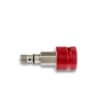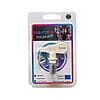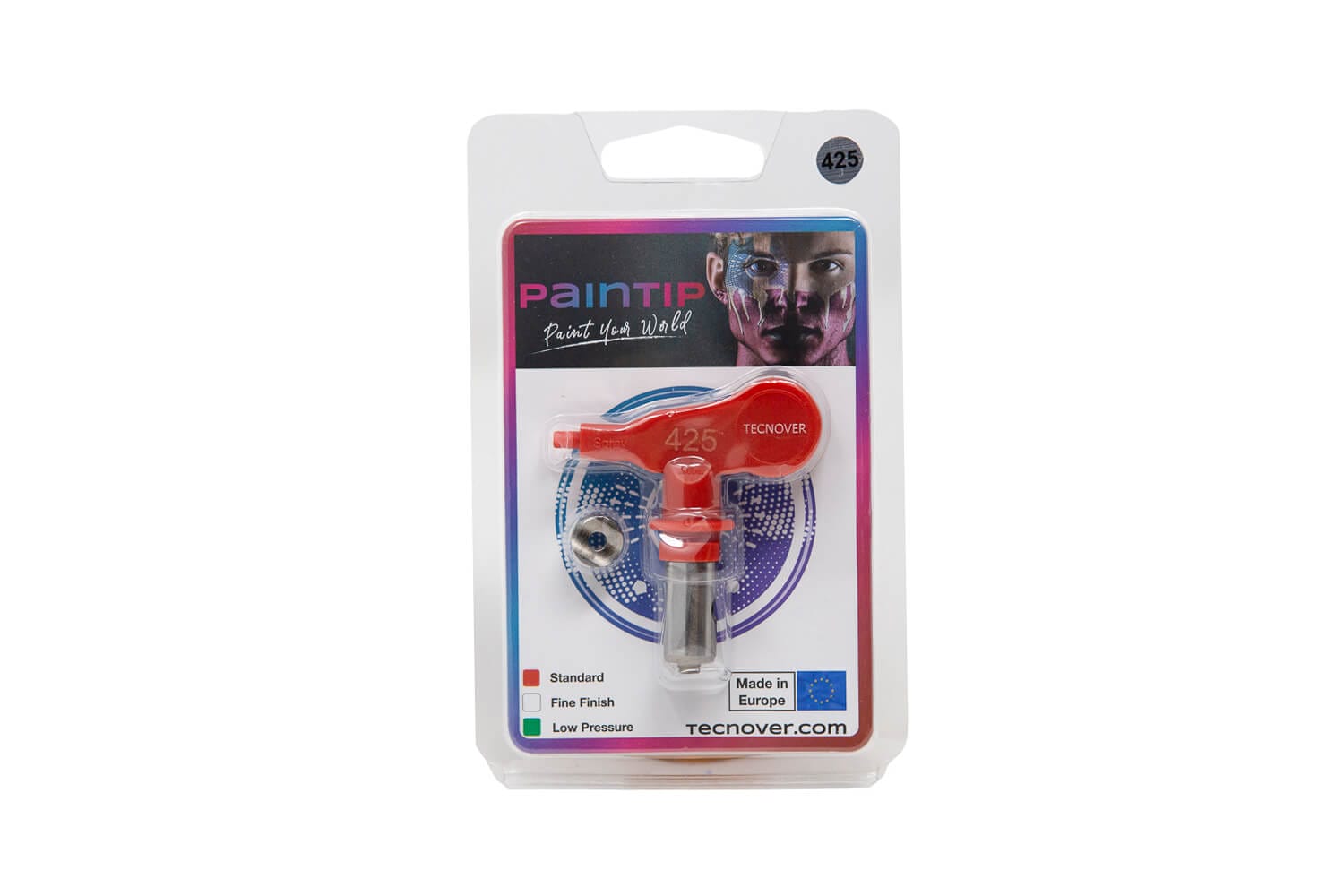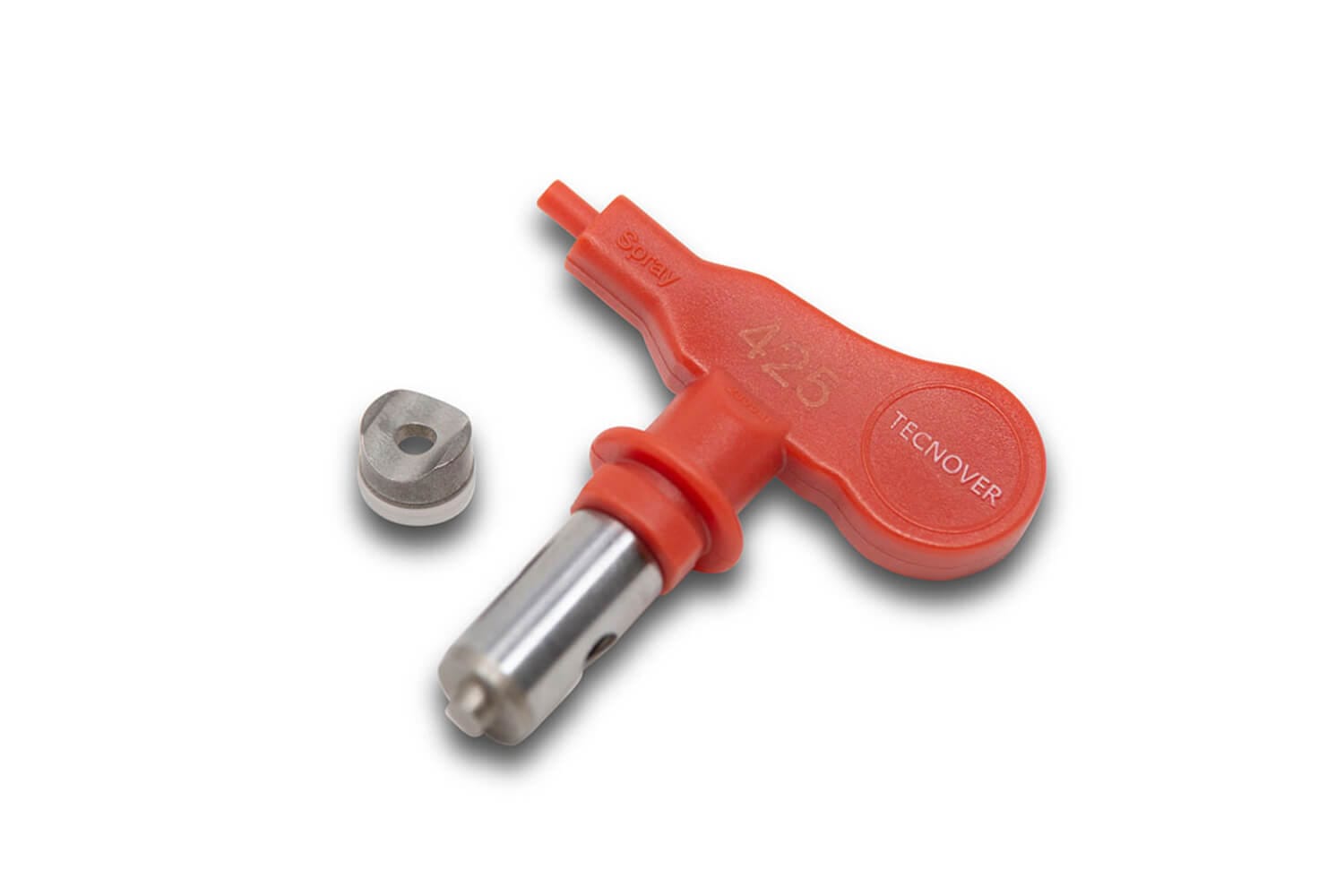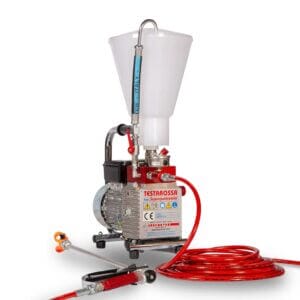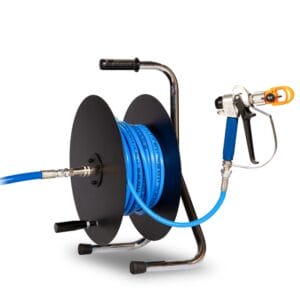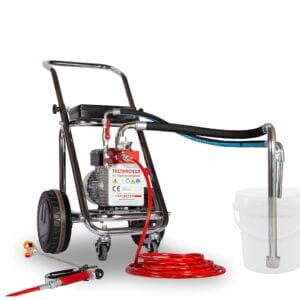Airless Self-cleaning Nozzle Paintip Standard
53.00€ (Italian VAT incl.)
Self-cleaning nozzle TECNOVER Paintip Standard for maximum productivity on large surfaces and where there is no risk of spraying.
You can recognise it from the red butterfly.
Self-cleaning nozzle TECNOVER Paintip Standard.
- The Paintip Standard nozzle for maximum productivity on large surfaces and where there is no risk of spraying.
- Stainless steel nozzle cylinder
- Tungsten carbide nozzle for maximum abrasion resistance and long life
Guaranteed by the TECNOVER brand, a leading Italian company with over 35 years of experience in the sector that guarantees reliability and efficiency over time.
A wide variety of sizes of airless nozzles are available, very different in technical characteristics and performance, each of which is designed for particular applications. To distinguish them, you can refer to some parameters:
- The first digit on the nozzle: is indicative of the width of the fan and therefore of the covered surface: it corresponds to the spray angle. When, for example, as in the photo, the number indicated is 4, it means that the nozzle produces a spray with a fan equal to 40 degrees. If you multiply this number by 5 you will get how much surface you cover with the spray standing 30 cm from the artifact (example: 4 x 5 = 20 cm). If you need to paint a wall, for example, it is advisable to use a wide spray angle that can cover a wider surface. Typically, nozzles with a fan size of 40 or higher are used. For more detailed spraying, such as railings, poles or columns, a nozzle that allows for more accurate nebulisation is preferable, thus opting for a 10 or 20-degree fan.
- The last two digits on the nozzle are usually odd and indicate the size of the spray hole in thousandths of an inch. In the example the 25 will indicate 0.025″ inches. The higher this number, the higher the flow rate of the fluid. If you have a 425 airless nozzle, you can benefit from a higher flow than you would with a 423 nozzle. Also, remember that the size of the orifice is also linked to the amount of paint sprayed. The flow rate of the material naturally also depends on the pressure (the higher the sprayed paint flow rate) and the type of product used (the heavier the material, the lower the flow rate).
| Ventaglio | 10, 20, 30, 40, 50, 60 |
|---|---|
| Foro | 0,007″, 0,009″, 0,011", 0,013", 0,015", 0,017", 0,019", 0,021", 0,023", 0,025″, 0,027″, 0,029″, 0,031″, 0,033″, 0,035″, 0,037″, 0,039″, 0,041″, 0,043″, 0,045″, 0,051″ |

